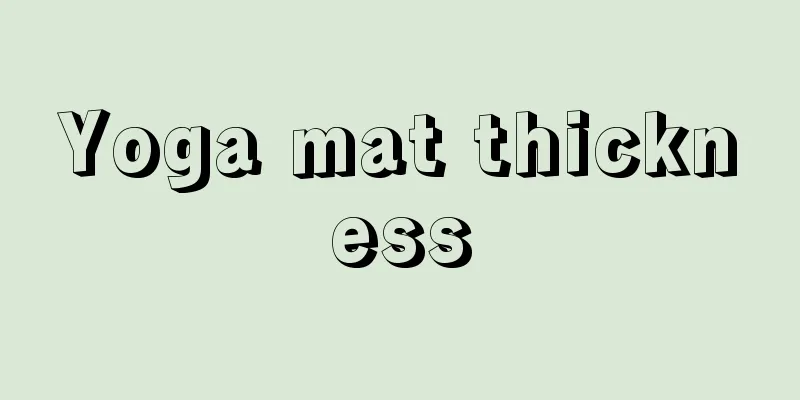Yoga mat thickness

|
A yoga mat is an essential item for practicing yoga. Without a yoga mat, scratches and sprains may occur on the body. A high-quality yoga mat can not only support the body, but also prevent deformation and slipping. The selection of yoga mats cannot be blind. The size, material and thickness of yoga mats are all key points in purchasing. Different stages of yoga movements require different mats. A suitable yoga mat can make the movements more effective and achieve a better effect of strengthening the body. What is the best thickness for a yoga mat? Need to choose according to our practice level. 2.5mm: Suitable for practitioners who want to carry it with them. It is usually used outdoors or in the office. It can also be used to cover other yoga mats in yoga studios. 3mm: Generally used by experienced people or yoga instructors. Not recommended for beginners! 4mm: Rarely seen yoga mat thickness 5mm: This is a suitable thickness for yoga mats of various materials and is suitable for everyone. 6mm: The most common size. Most TPEs use this thickness, which is also the most practical thickness. It is suitable for beginners, seniors and anyone. 7mm: Usually yoga mats are 6mm or 8mm, but a few manufacturers also make 7mm ones. Suitable for beginners 8mm: The most common and most suitable hair thickness for beginners. But pay attention to the problem of thickness not meeting the standard 10mm: Generally used by beginners, it has strong protection but poor standing balance (please buy with caution!!) 10mm and above: Generally designed for fitness mats and not suitable for yoga practice. Many professional yoga masters use very thin yoga mats that can be carried with them, and some even use yoga blankets made of cloth instead. This is because a yoga mat that is too thick and too soft is not conducive to mastering the balance of yoga poses. Most people recommend beginners to use a thickness of 6-8mm, which can provide more protection for the body and joints to avoid injuries during training. But don’t blindly pursue thickness. In fact, those very thick "yoga mats" are more suitable for fitness enthusiasts. Yoga is a sport that places great emphasis on balance. A mat that is too thick can easily lead to an unstable center of gravity, causing sports injuries such as sprains, and is not conducive to learning yoga. After gradually mastering the essentials, you can use a 4-5mm yoga mat, while experienced people can use a 2-3mm thin mat to fully feel the ground and maintain the stability of the movement. |
Recommend
Why are biceps difficult to train?
Many friends who like fitness and bodybuilding th...
How to exercise the pelvic floor muscles
Many women will have weak pelvic floor muscles af...
How to play bowling
Exercise can make us healthier. Now more and more...
What are the exercise plans for muscular men?
Everyone has a love for beauty. Everyone has the ...
How effective is 20 minutes of running for weight loss?
Running is a relatively common sport. It not only...
What are the benefits of strength training with equipment?
After many novices get a gym membership, they sta...
Is yoga good for gynecology?
Many people usually do some fitness exercises on ...
Can doing push-ups regularly help build arm strength?
Men all want to have sexy and strong pectoral mus...
Essential gym equipment
Fitness is a very common thing nowadays. Fitness ...
What are the ways to exercise to keep fit?
We can see on TV that many movie stars have muscu...
Women can detoxify and become rosy after having sex 7 times
Yoga can regulate the body's internal circula...
What are the consequences of strenuous exercise after a meal?
Many people like to do some exercise after dinner...
Men and women must do this for more than thirty minutes
According to a survey, 83.8% of residents over th...
How long after a meal should you exercise to achieve weight loss results?
After meals is the time when fat is most likely t...
Aerobic benefits of playing basketball
Playing basketball is a very good aerobic exercis...









